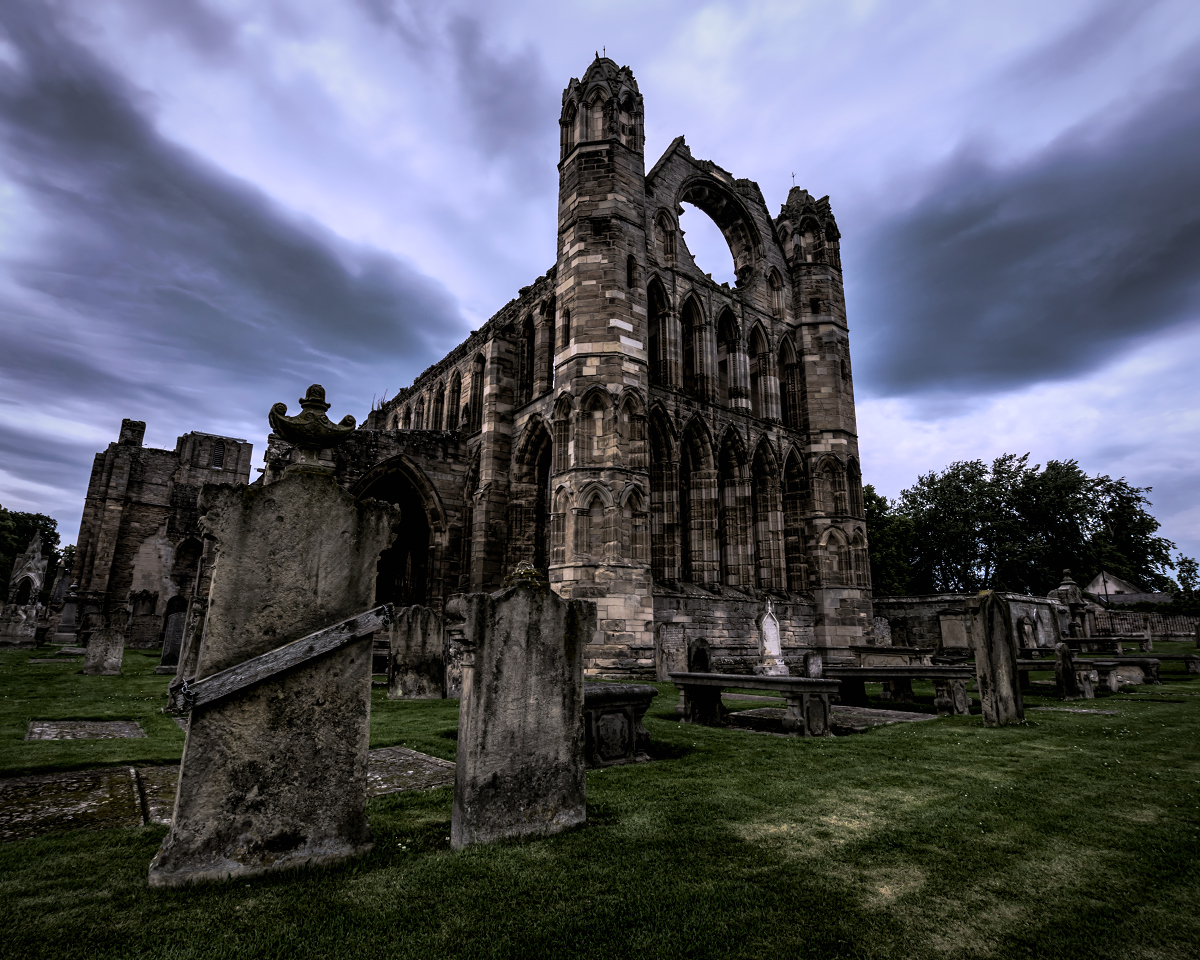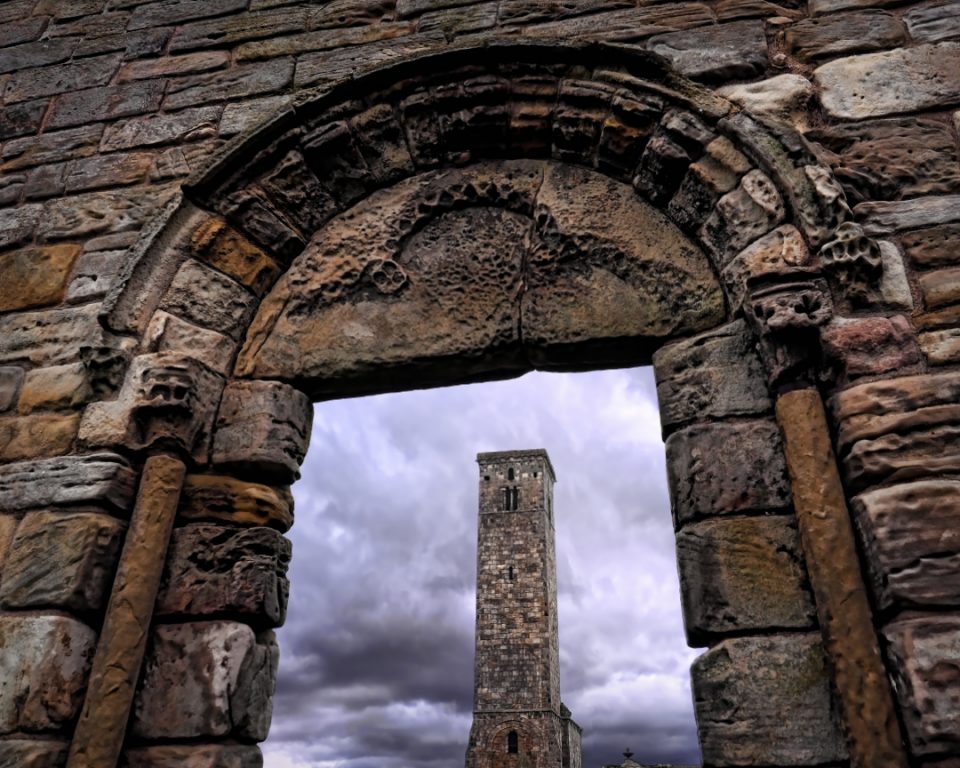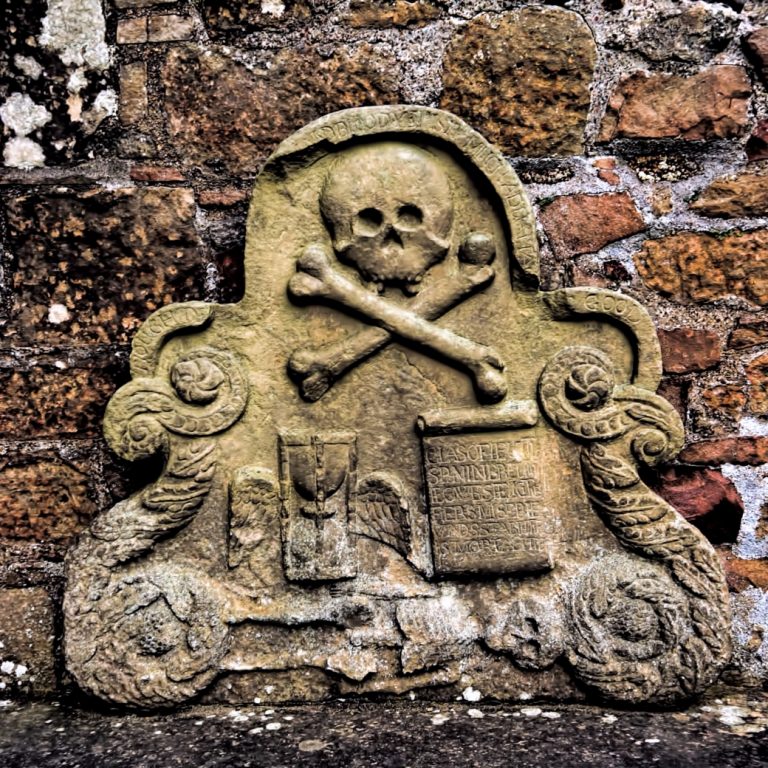Alexander Stewart, otherwise known as the Wolf of Badenoch, is perhaps the most notorious character ever to set foot in the north of Scotland. From his lair at Lochindorb, he began a reign of terror which extended through his lands in Northern Perthshire, to Buchan in the East and Lewis to the West. He was not a man to be meddled with, this princeling lord and great-grandson of Robert the Bruce. But what did this man do which gave him so much notoriety? What led him to become one of the vilest villains of his time? Was he really the bad apple of the family or the one who got caught?
The Young Wolf of Badenoch
Alexander Stewart was the fourth son of Robert Stewart and Elizabeth Mure of Rowellan. He, along with his elder brothers and sisters, was illegitimate until Robert married Elizabeth in 1348, when Alexander was five-years-old. Robert was a man with ambition and often at loggerheads with his uncle, King David II of Scots.
King David spent much of his life at war with the family of John Balliol, who had once been King of Scots, and with the English. As a result, he spent much of his reign either in exile or in captivity. Meanwhile, in the shadows, Robert was building a power base for himself and creating a large dynasty. Robert was playing a waiting game. On more than one occasion during David’s captivity he had been made guardian of Scotland, and no doubt had savoured his taste of power.
Perhaps foreshadowing what was to come, in 1363 Robert Stewart was censored for rebelling against the King. It seemed that family ties did not guarantee loyalty. In 1368 Robert and his sons were forced to make an oath to the king that they would keep their undisciplined followers in check. Later that year both Robert and his son, Alexander were imprisoned in Loch Leven Castle. Apparently, Alexander had been running protection rackets and needed his wings clipped.
Alexander was said to be Robert’s favourite and as such was indulged as a child. However, he had grown into a volatile and petulant young man.
The Wolf of Badenoch on the Rise
In 1371 King David died and Robert acceded to the throne. With his father crowned King of Scots, Alexander Stewart was a man on the rise. First, he was appointed Lord of Badenoch. In the years that followed other titles would be added to the list including Earl of Buchan, Sheriff of Inverness and Justiciar of Scotland north of the Forth. Not only did he own great swathes of land, he was the law in the North. There would be no recourse for those on the receiving end of the Wolf of Badenoch’s violence. There was no end to his thirst for power. He extended his land holdings by leasing Urquhart from his half-brother, David Stewart and conveniently forgot that the lease was temporary. He also acquired further lands in the Grampians and Northern Perthshire.
Then in 1382, he married Euphemia, Countess of Ross thus adding the Earldom of Ross as well as lands in Lewis, Skye and Dingwall to his ever-increasing real estate holdings. This was to be the real jewel in the crown. He had just doubled his landownership overnight. Not only did he have an obscenely large landholding, but he had command over all the routes through the central Highlands.
An Abuse of Power
Unbridled power and unbridled passion are poor bedfellows. King Robert turned a blind eye to his son’s ways. The Wolf of Badenoch was an imposing figure: large in stature with a florid complexion and a jet black beard, he used his appearance to maximum effect. He maintained his stranglehold over the Highlands by imprisoning or murdering those who offended him. He accompanied his men on missions to rape and pillage villages in the Western Grampians. Cruel and merciless, he held the north in his iron grip, knowing that he could do what he liked with impunity.
But Alexander was a lowlander, and this was a real drawback in the north. Here chieftains could call on their clan for fighting men. If Alexander wanted muscle, he would have to pay for it. His main force were gangs of caterans, paid Gaelic warriors who did his dirty work.
The Wolf of Badenoch and his Caterans
There was a pattern to Badenoch’s land racketeering. First of all, he would claim over-lordship over an area of land. Then he would send in his caterans in a series of raids on the original owner’s property. The land would begin to lose revenue. This would result in the legalised transfer of the lands to Badenoch. Most people acquiesced quietly. That is, until he got into an altercation with the church.
The Wolf of Badenoch and the Bishop of Moray
As the Wolf of Badenoch expanded his territory, it was inevitable that sooner or later he would clash with the other great powerbroker in Scotland: the church.
In 1370 Alexander Bur, the Bishop of Moray had entered into a protection agreement that the Lord of Badenoch would have no power over him, his people or his lands in the vicinity. However, the domain of Rothiemurcus had been granted to the church by Alexander II. This was a huge tract of land, some ten per cent of Badenoch’s Lordship and a tempting attraction. Despite the protection payments, it seems the raiding caterans had called, and the lands were making a loss.
Then on the 13th July 1380, Alexander Stewart called a meeting of everyone who possessed lands within the Lordship of Badenoch demanding that they produce their land titles at the Standing Stones of Rate of Kingussie, in the Parish of Dunachton.
Amongst those called to attend was Bishop Alexander Bur. Bur was adamant that the Chapels of Rate and Dunachton were independent of Alexander Stewart’s power and he wanted to keep things that way.
The Wolf gets his Own Way
On the 11 October 1380, Badenoch’s court got underway. The Bishop of Moray appeared with a huge retinue. No doubt the Wolf of Badenoch had surrounded himself with his gangs of caterans.
Ultimately the Bishop of Moray would leave with the Chapels of Rate and Dunachton still in episcopal control but the deeds to the domain of Rothiemurcus were now firmly in the hands of the Wolf. Alexander Stewart had applied his land racketeering skills on the church and this time around the church had acquiesced. This was just the beginning of a feud between the two Alexanders. Bur had other weapons in his arsenal that he would use. For now, he was biding his time.
The Wolf of Badenoch and his Lair at Lochindorb
There were many castles included in the Wolf of Badenoch’s real estate portfolio including Drumin Castle at Glenlivet, Castle Garth near Glen Lyon and Ruthven castle near Kingussie. However, his residence in chief was Lochindorb Castle. Lochindorb means ‘Loch of Trouble’ in Gaelic. It seems an appropriate name for the Wolf’s lair. Located on a loch, surrounded by hills, in the middle of the Dava Moor, the castle would have been virtually impregnable. It is a wild and inhospitable landscape well suited to a wild-hearted prince, at odds with his siblings and causing havoc in the north.
Here, with the coming of the spring, the call of the cuckoo fills the air and the osprey return to fish in the bleak, peat-stained depths of the loch. As the summer draws to a close, the land is covered in an explosion of purple as the heather blooms. Then the chill blast of winter arrives and only the mountain hare venture onto the snow-laden peaks. It has an achingly desolate beauty, but It is not a place that the faint-hearted would choose for a home.
It was here that the Wolf of Badenoch would carry the love of his life, his mistress Mariota Athyn or Mairead inghean Eachann as she was known in Gaelic. Alas, Euphemia, his wife, failed to produce any offspring. The Wolf of Badenoch allegedly fathered some forty illegitimate children. Lacking an heir, he laid the blame squarely on Euphemia’s shoulders. Euphemia was sent packing from Lochindorb and his mistress was installed in her place.
Family Trouble
Meanwhile, King Robert was ageing and in ill-health. As King, he had ensured that he had influence over most of the Earldoms in Scotland. He was an opportunist of the highest degree. Eight of the fifteen Scottish Earldoms had either been bestowed upon his sons directly or he had married his daughters to sitting Earls. Thus, eight earls were directly under his control and could pull weight when the Scottish parliament met.
Opportunistic fathers beget grasping opportunist sons. In 1384 while the King had become weak and almost blind, his eldest son, the Earl of Carrick, staged a virtual coup d’état. Using the issue of lawlessness in the north, he took executive authority from his father with the backing of the general council. Carrick, however, was ineffectual in controlling his younger brother, who continued to expand his lands in the north.
Fate intervened in the form of an accident. Carrick was kicked by a horse and left severely disabled. In the interim, the King’s second son and namesake crept out of the woodwork. Robert Stewart, Earl of Fife and later to become the Duke of Albany, was a contriving and manipulative man. He used the accident to take control of the country and became Guardian of Scotland in 1388.
His first action was to try to rein in his unruly younger brother.
The Start of the Fall
A mere ten days after his appointment as Guardian, Fife stripped his brother, Badenoch, of his role as Justiciar and appointed his son Murdoch in his stead. He bought lands in northern Perthshire to become the main landowner in the region. Then he set about arranging a series of marriages for his family to increase his power base. In 1389 he rode into Inverness with a large retinue and the wheeling and dealing began.
First, he removed Badenoch as Sheriff of Inverness and appointed Thomas Dunbar, son of the Earl of Moray in his stead. Then he cleared Alexander Bur, Bishop of Moray, from the suspicions of being involved in the murder of David Barclay, forty years earlier. Using this as leverage, he then arranged for the Bishop and Earl of Moray to settle their differences and enter into a new pact. Instead of paying protection money to the Wolf of Badenoch, the Bishop would now pay £100 annuity to the Sheriff of Inverness for protection.
Then Robert turned to Euphemia to strike his next blow. The legitimacy of the Wolf’s marriage to the Countess was questioned. Divorce could be justified because of his illegitimate relationship with Mariota. Since the lands of Ross were held jointly with his wife, a divorce would deprive him of a large part of his lands and subsequent power. Of course, the Bishop of Moray had an axe to grind. His moment of revenge had arrived.
An Ultimatum to the Wolf of Badenoch
The following month, in November 1389, the Bishops of Moray and Ross issued an ultimatum: Mariota must go and Euphemia must be re-instated or they would issue a divorce and the Earldom of Ross would revert back to belonging solely to Euphemia. The Wolf agreed in theory although in practice he carried on with his adulterous relationship. Meanwhile, he sat in his abode on the Island of Lochindorb nursing the flames of his wrath and biding his time.
Then in the Spring of 1390 he was delivered another blow: his father and erstwhile protector died.
His brother John, the Earl of Carrick, acceded to the throne despite his injury. There had only been one John on the throne prior to this, John Balliol, and that had been a disaster. As a result, he was crowned Robert III, King of Scots. No doubt this stuck in his brother Robert’s craw, for he could see himself holding that title one day. But Robert’s injuries prevented him from ruling the country and for a while, his son David, Duke of Rothesay, became Guardian of Scotland.
Lighting the Lantern of the North
The Earl of Moray had travelled south to attend a tournament. This gave the Wolf the opportunity he was looking for. He would get revenge! First, in May 1390, he gathered his lawless caterans and set fire to the town of Forres. This was the Earl of Moray’s Territory. Then he unleashed his vengeance on the church and the Bishop of Moray in particular. In June he set out to for Elgin with his ‘wild wykked Heiland men’, burning Pluscarden Priory on the way. On the 17th June 1390, he arrived in Elgin and began to set the town ablaze. The properties of the church were targeted including the Parish Church of Saint Giles, the Hospital of Maison Dieu, the Monastery of the Greyfriars and Elgin Cathedral and the eighteen mansions belonging to the Cathedral’s Canons and Chaplains.
Elgin Cathedral was the second-largest cathedral in Scotland and was given the title ‘The Lantern of the North’. The Wolf of Badenoch is reputed to have said, “I have lit the Lantern of the North” as he set fire to this beautiful and magnificent building. He plundered the churches of their ‘sacred utensils and vestments which he carried off’. He quite spectacularly had made his point: the new protection agreement did not work. The Dunbars could not uphold their part of the agreement to keep the church in Moray safe.
Repercussions for the Wolf of Badenoch
His show of power backfired dramatically. Rather than winning him political support, it earned him universal revulsion, for violence against the church, was regarded as a heinous act and an offence to God. He was excommunicated and forced to do penance in sackcloth outside the Dominican friary in Perth. His marriage to Euphemia was annulled by the Pope in Avignon in 1392. She had petitioned the Pope saying that her husband had caused ‘wars, plundering, arson, murders and many other damages and scandals.’
His sons to Mariota, seeing their inheritance disappear, went on a rampage through the Southern Highlands. His son Alexander killed the Earl of Mar and forced his widow to marry him so he could obtain her lands. Three of his sons were thrown in jail and this it seems kept the Wolf at bay during his final years. Small wonder for his brother Fife, now known as the Duke of Albany, had risen to become the main power broker in Scotland. He had David, Duke of Rothesay, heir to the throne, thrown into prison. Albany swore that the young prince died of natural causes. But the rumours were rife: Albany had staved the crown prince to death.
A Visit from the Devil
Alexander Stewart, the Wolf of Badenoch, died in 1405. There is a myth that on the night of his death, he was residing at Ruthven Castle. He was visited that night by a mysterious tall man, dressed in black. The stranger wished to play a game of chess with the Wolf. After several hours, the man called ‘check’ and then checkmate’. Upon calling these words, a great storm arose of thunder, hail, and lightning. The storm raged through the night. In the silence of the morning, the Wolf’s men were found outside the castle walls, their bodies charred and scorched as if they had been hit by lightning. The Wolf was found dead in the Great Hall. There were no marks on his body. However, the nails in his boots had all been ripped out. Such are the perils of entering into a game with the Devil!
Alexander Stewart was laid to rest at Dunkeld Cathedral. When they came to inter his body, he was so reviled by the clergy that they refused to allow his body to pass through the front door and he had to be brought in through the back entrance. Today his tomb is topped by an effigy of a man dressed in armour. It is one of the few royal tombs to survive the ravages of the Protestant Reformation.
Please feel free to share the spooky by using the links below or leave us a message in the comments box.




